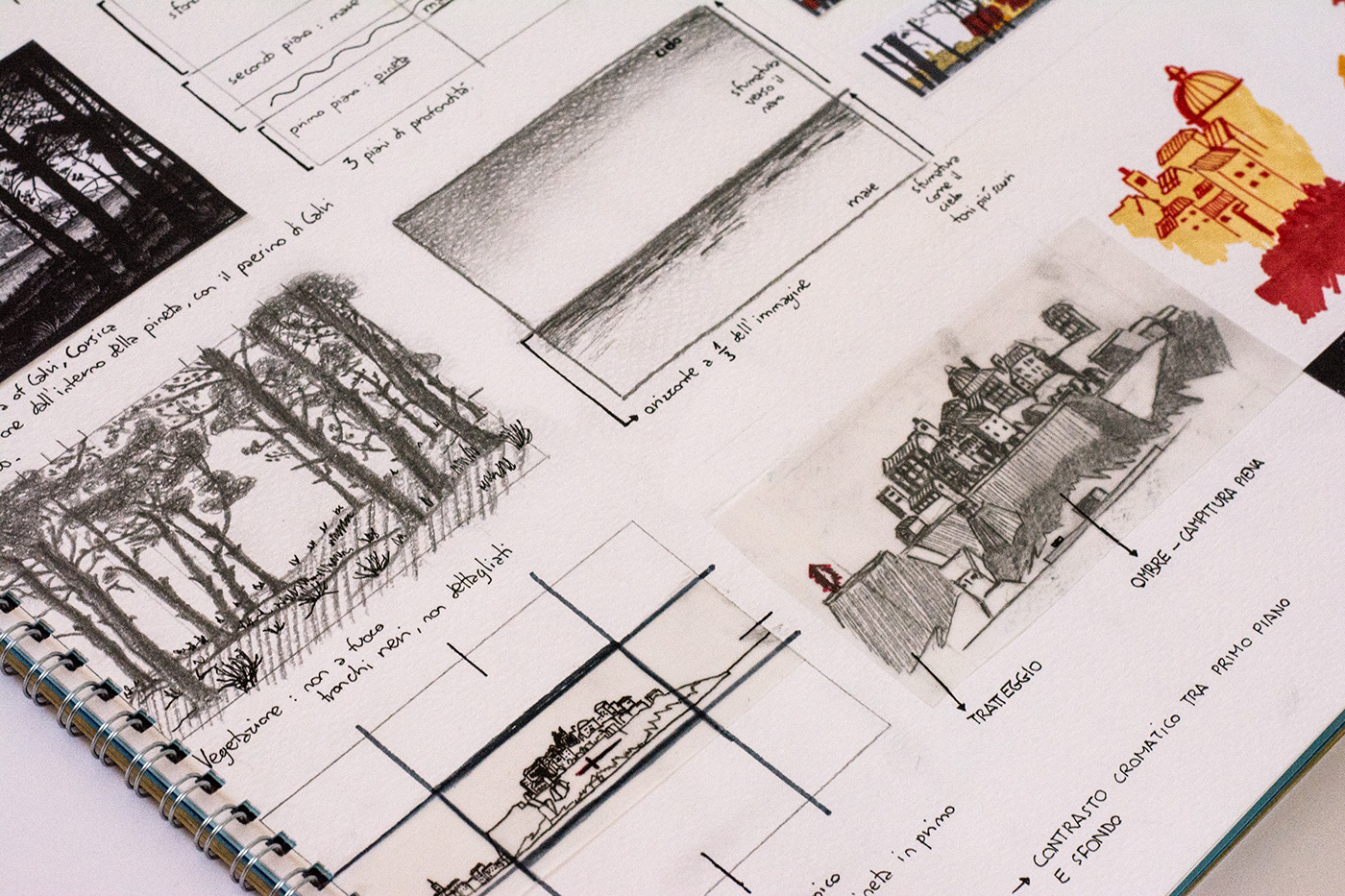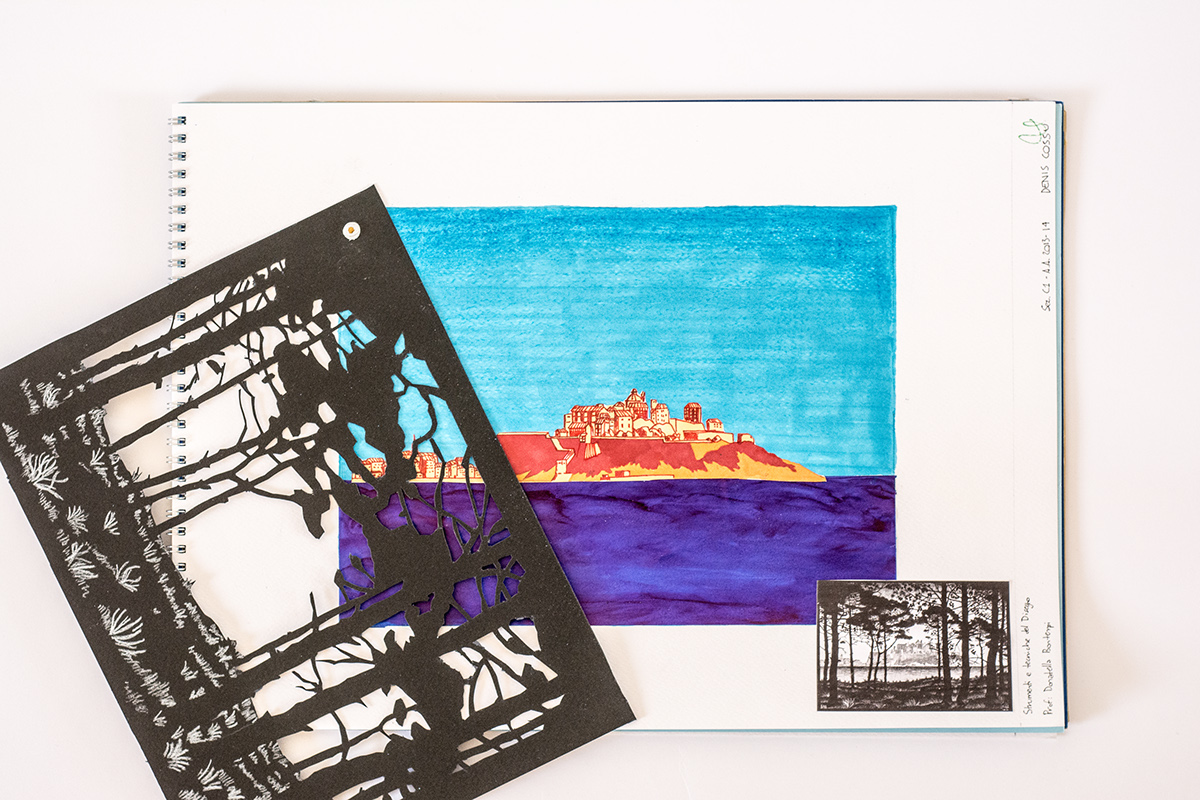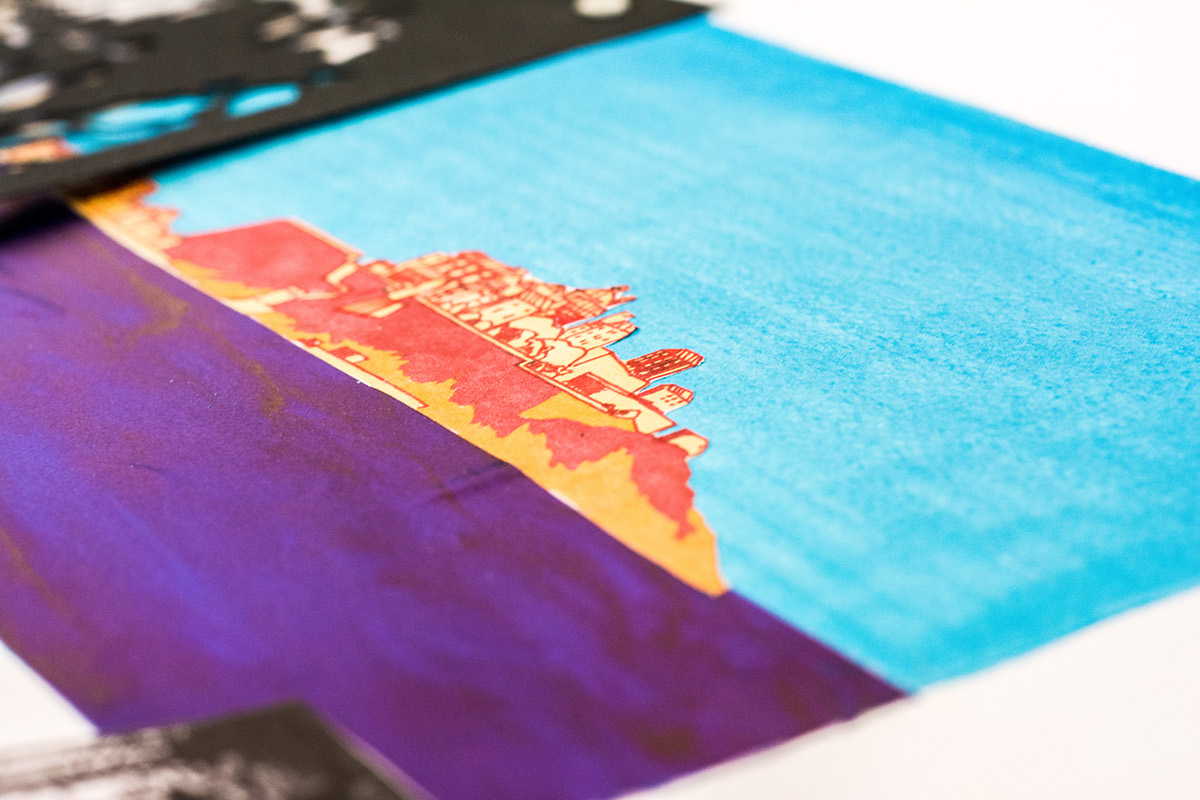

One part of the first year drawing lab deepened our knowledge about drawing instruments and techniques. Among the works with pencils, pens and papers, we were asked to choose one illustration by Maurits Cornelis Escher and to analyze its layers. The chosen image is Escher’s wood engraving of a view of Calvi’s waterfront seen from its citadel (1933). He depicted the scene from inside a wood, the citadel is placed at the center;
the sea extends from the wood to Calvi’s cliff and a shaded sky fills 2/3 of the image above.
the sea extends from the wood to Calvi’s cliff and a shaded sky fills 2/3 of the image above.

This was a perfect illustration where I could analyze different layers: the woods in the foreground,
the sea extention, the natural and anthropic elements of the citadel and the light to dark blue sky.
the sea extention, the natural and anthropic elements of the citadel and the light to dark blue sky.
The best way to represent different layers was to use different sheets of different papers,
so that they could be overlaid.
so that they could be overlaid.



The first and further layer is the sky, drawn using wax crayons; the citadel is represented with two colors separating red rocks from mustard buildings; the sea shows a different technique: an ocean-blue
promarker on a sheet of tracing paper, so that the ink wouldn’t dry fast and a finger could move it creating lighter and darker spots, together with a wave effect. The woods in the foreground have been separated
from the real landscape, but the lack cardboard has been added to the image thanks to a split pin.
promarker on a sheet of tracing paper, so that the ink wouldn’t dry fast and a finger could move it creating lighter and darker spots, together with a wave effect. The woods in the foreground have been separated
from the real landscape, but the lack cardboard has been added to the image thanks to a split pin.


Details:



Politecnico di Milano
Communication Design
Drawing Lab


